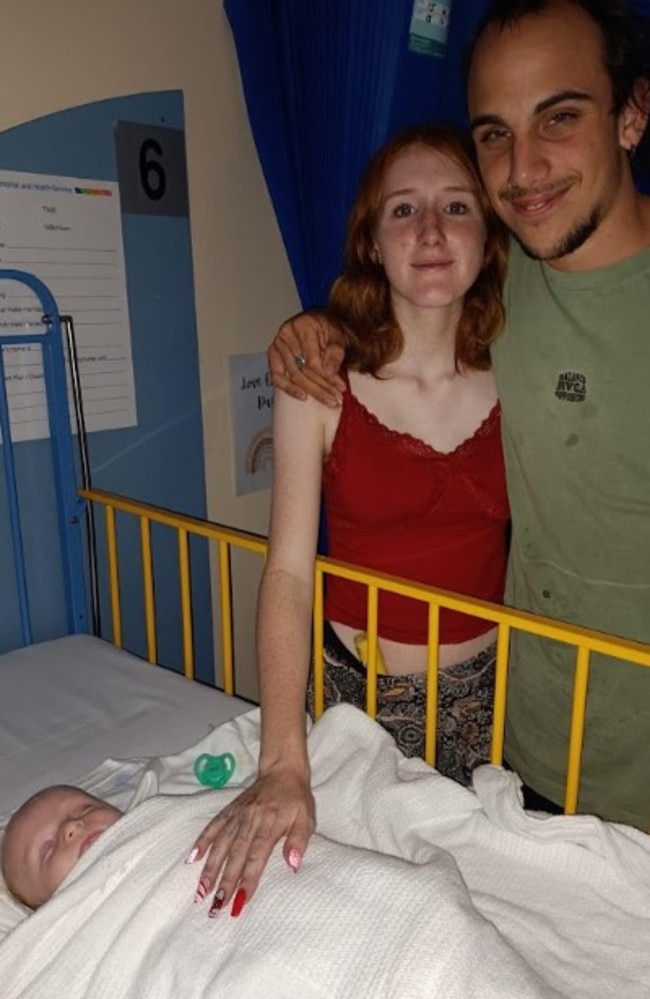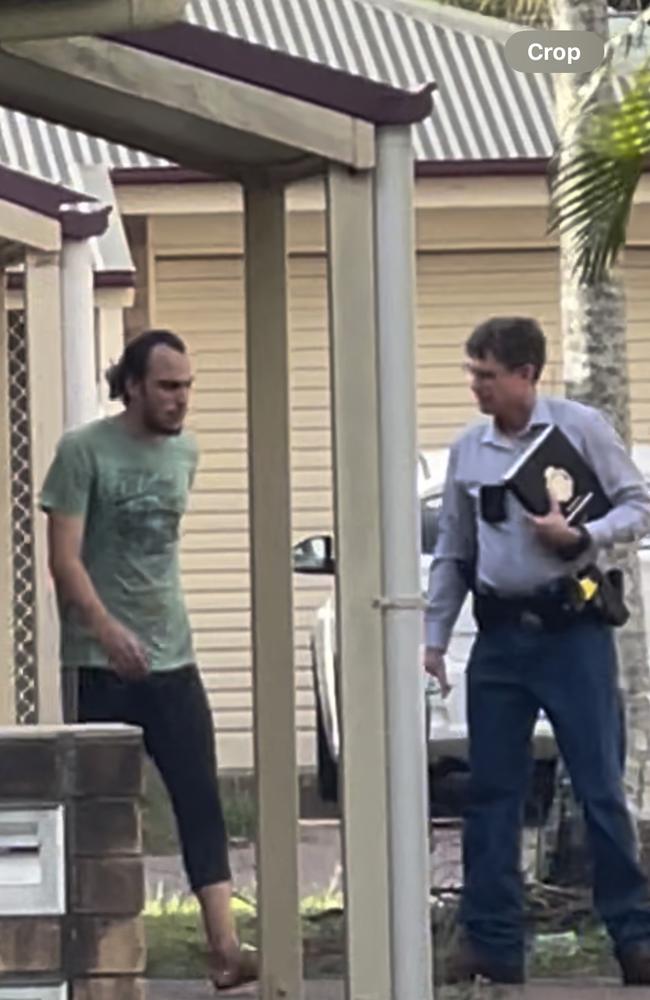Detective Wade Lee outlines investigation into death of baby Lucas
With a grieving public hoping for answers into the sudden death of a four-month-old baby this week, a senior detective has revealed the process and challenges investigators now face. SEE VIDEO
Police & Courts
Don't miss out on the headlines from Police & Courts. Followed categories will be added to My News.
Almost a week after the sudden death of four-month-old Bundaberg baby Lucas, no charges have been laid and many questions remain as to how the life of an innocent child being raised in one of Queensland’s biggest towns could come to such a premature end.
News broke of the tragedy at a media conference on March 5, when Detective Acting Inspector Wade Lee revealed the news of Lucas’ death at Brisbane’s Queensland Children’s Hospital the Sunday prior.
Insp Lee said Lucas had died from injuries sustained in Bundaberg on Sunday, February 25, but was unable to provide any further details because of the investigation.
A Queensland Police Service spokesman said the following morning, the investigation would likely be “long and protracted”, meaning a concerned public would have to wait before a full account was made available.
Now Inspector Lee has given some insight into police investigations into the causes of unexplained deaths.

He said the nature of homicide investigations almost inevitably meant they would take a long time, with the victim unable to tell their story.
MORE NEWS: Revealed: Dad’s fateful last call to missing son, as $500k reward offered
“The difficulty with dealing with a homicide is that we can’t hear the voice of the victim,” he said.
“So we have to rely on other things, and painstakingly give them a value in terms of the evidence and cross reference and double check.
“So it’s quite a labour intensive and painstaking process, which does take time.”
From the outset, police investigations such as the one into Lucas’ death are triggered in any case where the death is unexplained, Insp Lee said.
“If the child has received medical attention, and a medical practitioner has an understanding of the child’s ailments and is prepared to sign a cause of death certificate, then that explains the death.
“So (in that case) there’s no real need for authorities to be involved.
“It essentially is the death explained, or is it unexplained. And obviously if it’s unexplained, we look at it.”

At the March 5 media conference, Insp Lee informed reporters that Lucas’ injuries were “not explained”, and indicated police involvement was further required due to medical staff contacting the local Child Protection Unit after Lucas was rushed to Bundaberg Hospital in the early hours of Monday, February 26.
Neighbours living in the public housing block where Lucas lived in the care of his parents, Alex List and Dakota Worrall, gave a harrowing account of being woken around 1am by Dakota’s screams.
“I heard the mum slamming the door, saying ‘my baby is dying, he’s not opening his eyes, I don’t know what to do,” the neighbour, who spoke on condition of anonymity said.
“The father was saying ‘calm down, I’ll ring the ambulance for you’.
“Then everything went quiet.”
After the initial medical assessment at Bundaberg Hospital, Lucas was flown to Queensland Children’s Hospital with police contacted by medical staff about 5pm on Monday, February 26.
The first steps in a typical police investigation into an unexplained death involved interviewing witnesses and liaising with other medical and government services.
“We’re looking for an explanation,” Insp Lee said.
“So we would look at the versions of the witnesses. Who has responsibility for care? And we would seek an understanding of the medical history of the child.
“We need to have an understanding of any history in terms of child safety, police and other authorities.
“We’re trying to understand what happened, have an explanation.”
In the case of Lucas’ parents, Insp Lee said on March 5 the family was not previously known to Child Protection Services.
Mrs List and Ms Worrall are co-operating with the police investigation, with Mr List seen accompanied by two plainclothed police officers on a visit to the Bundaberg West unit on the afternoon of March 5.

Carrying a baby seat containing a toy child, Mr List and the police officers entered the apartment about 3pm, and left nearly two hours later at about 4.45pm.
Insp Lee said this part of the investigation was called a “re-enactment”, done with the witness’s consent for the purposes of helping them provide a full and accurate account of the incident.
“We’re after that explanation, and like most people with their memories, audiovisual cues do assist,” Insp Lee said.
Information gathered through the re-enactment and other interviews is typically compared with other witness accounts and evidence obtained via other means, including forensic investigations, CCTV footage and the medical autopsy report including pathology test results.
“We’re essentially trying to determine what’s in conflict with what we know,” Insp Lee said.
“What can we prove? What’s in conflict with what we can prove, and why is it in conflict?
“Is it the case that the (witness’s) version is accurate, or self-serving, or whatever?”
Insp Lee said the public outcry and impatience for answers was typical of any investigation into the death or injury of a vulnerable victim.

“The way I look at it, any vulnerable person in the community is entitled to have support from the community to make sure that they are safe and they are cared for properly,” he said.
MORE NEWS: ‘Not good enough’: Bundaberg MP to head up price gouging probe
In the front line against the worst atrocities imaginable, Insp Lee said cases such as Lucas’ took their toll on first responders and police investigators.
“It is difficult, particularly difficult when you’re dealing with any vulnerable victim,” he said.
“We’re seeing it far too often.”
More Coverage
Originally published as Detective Wade Lee outlines investigation into death of baby Lucas








